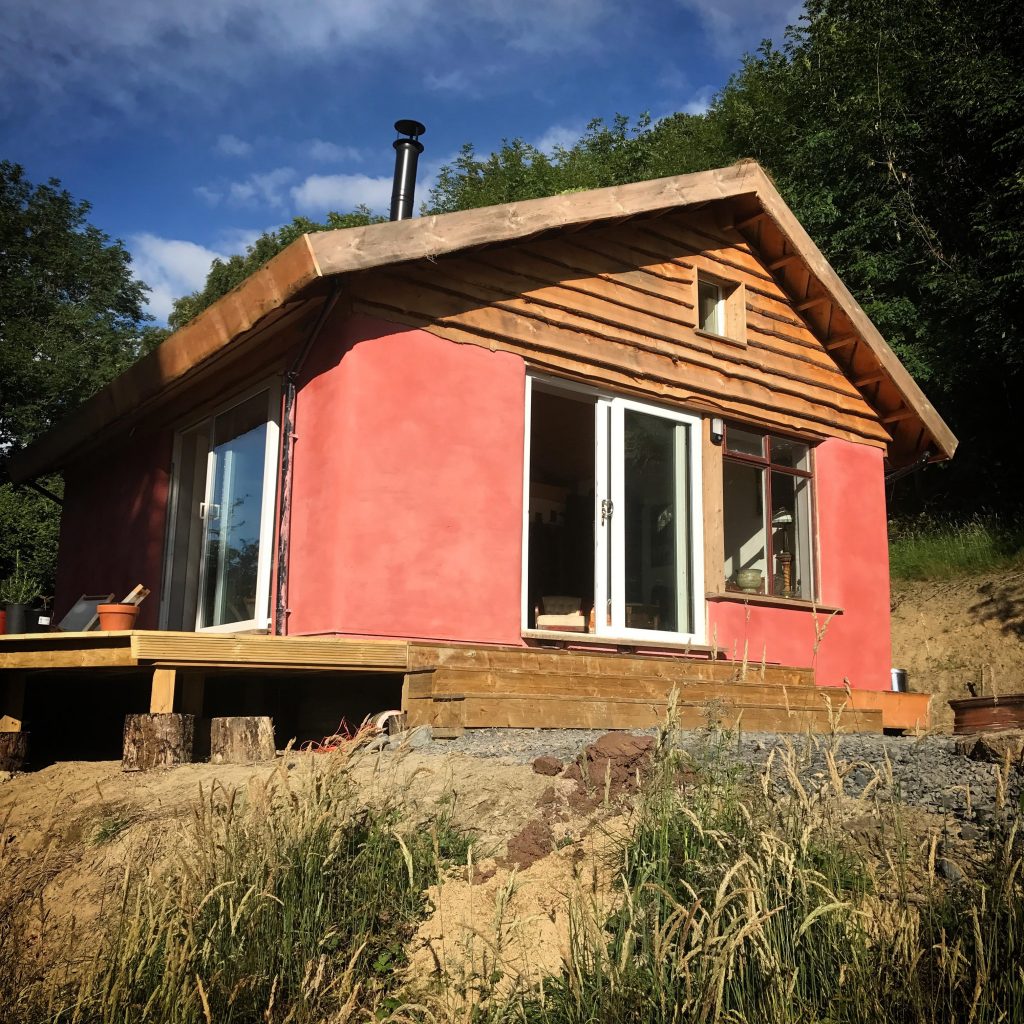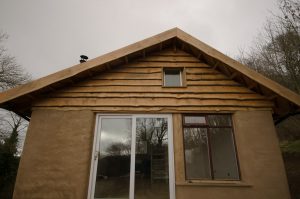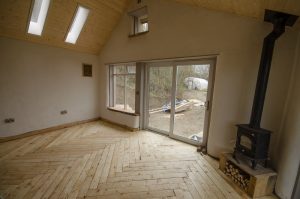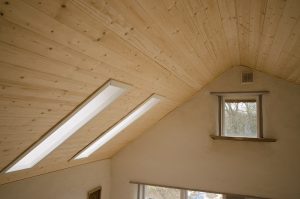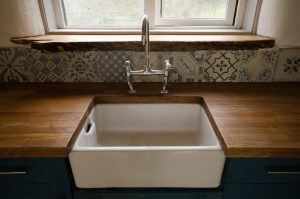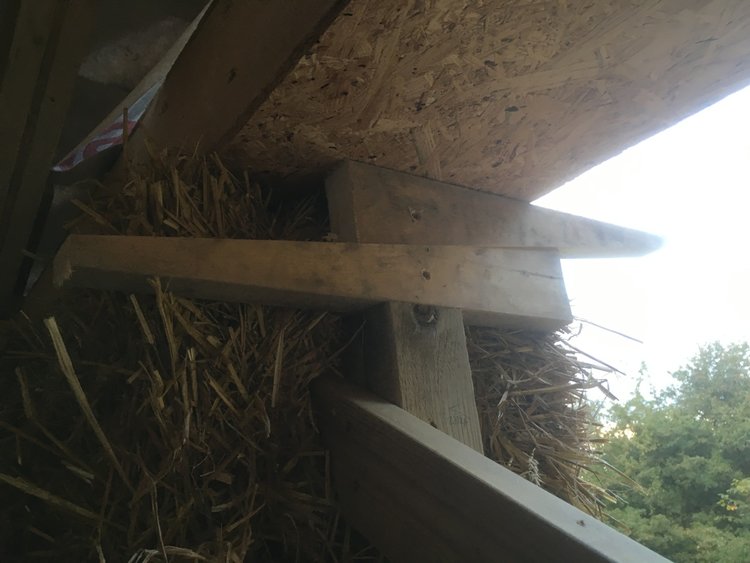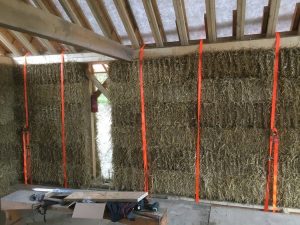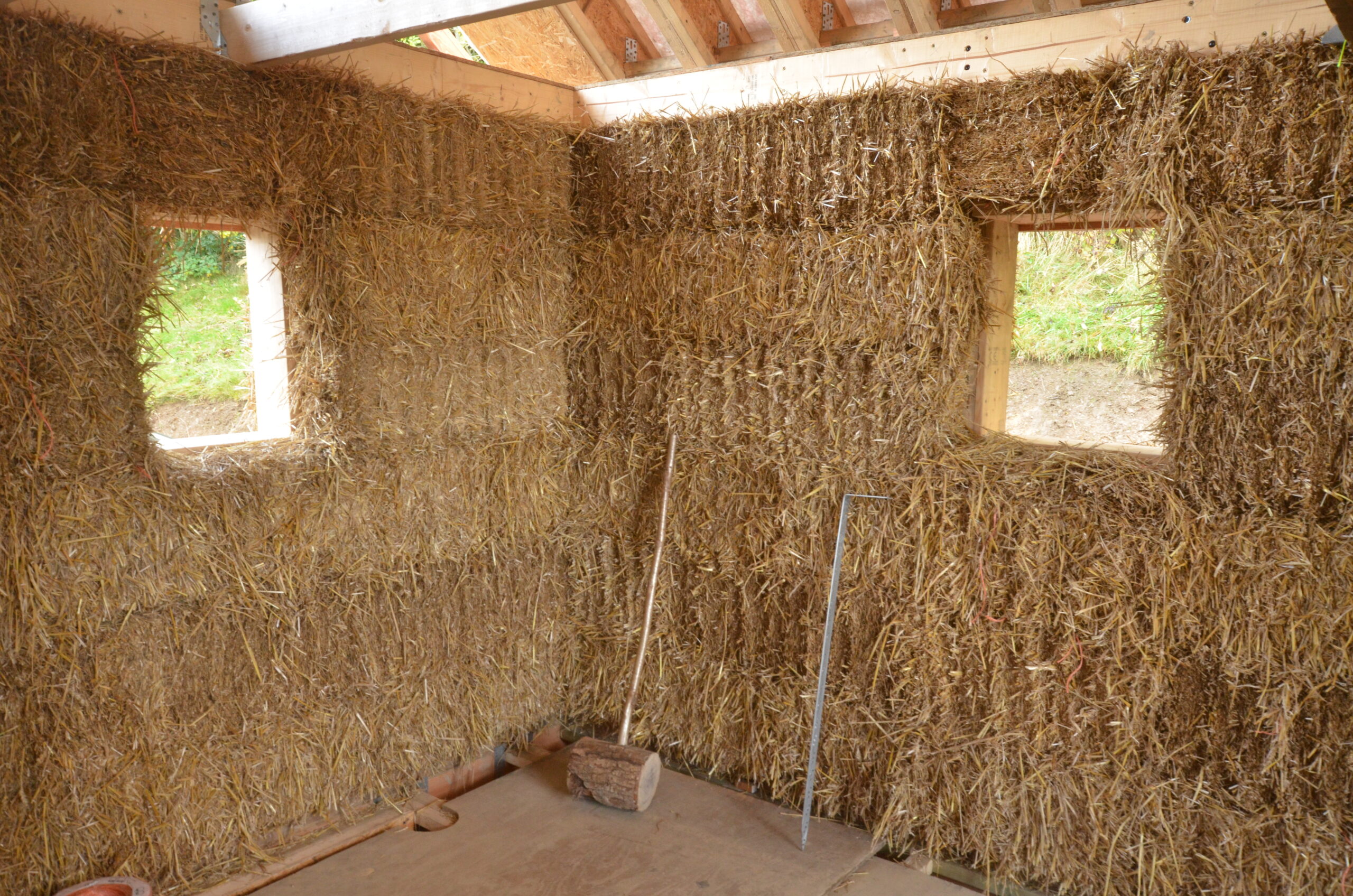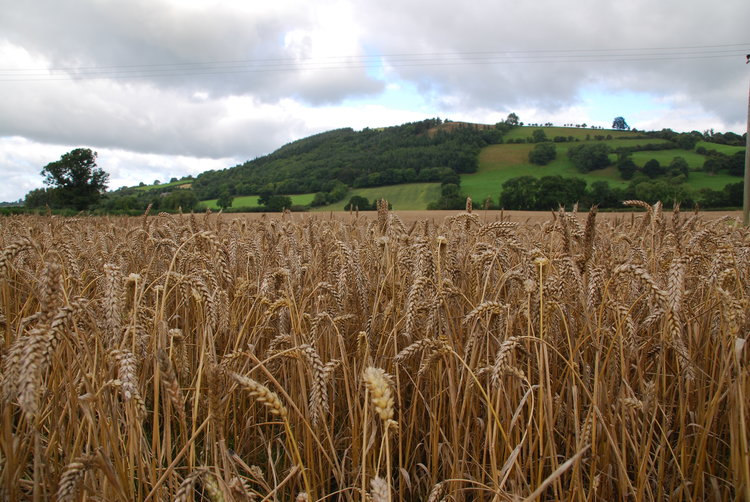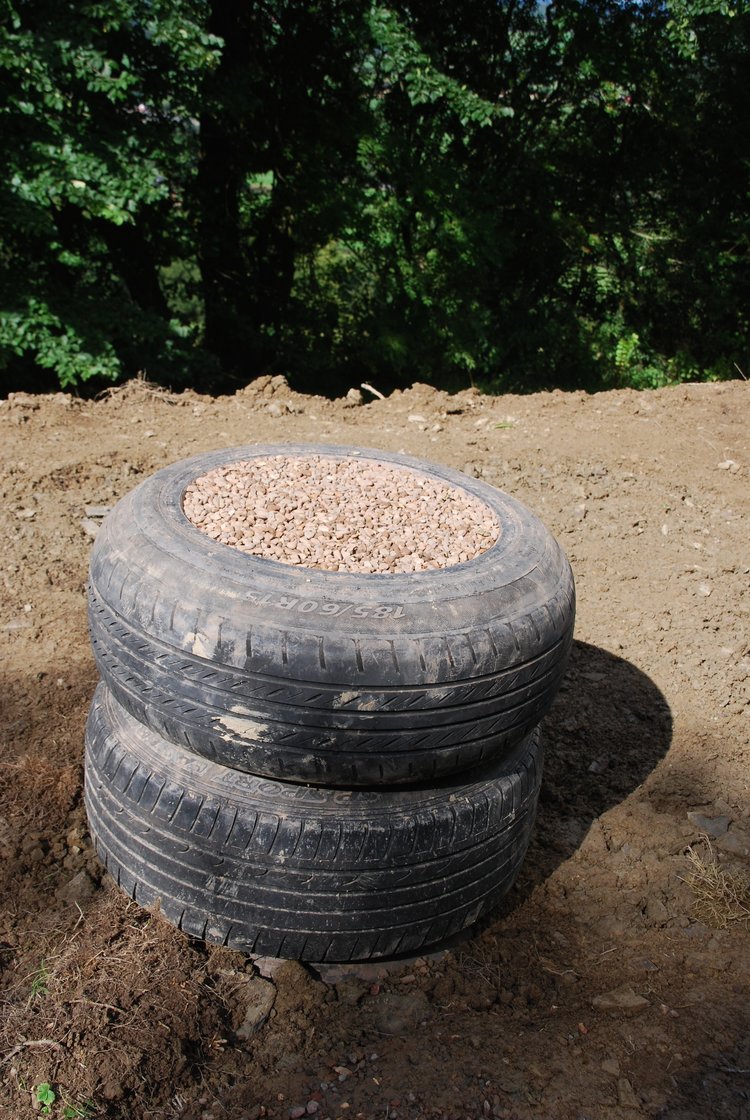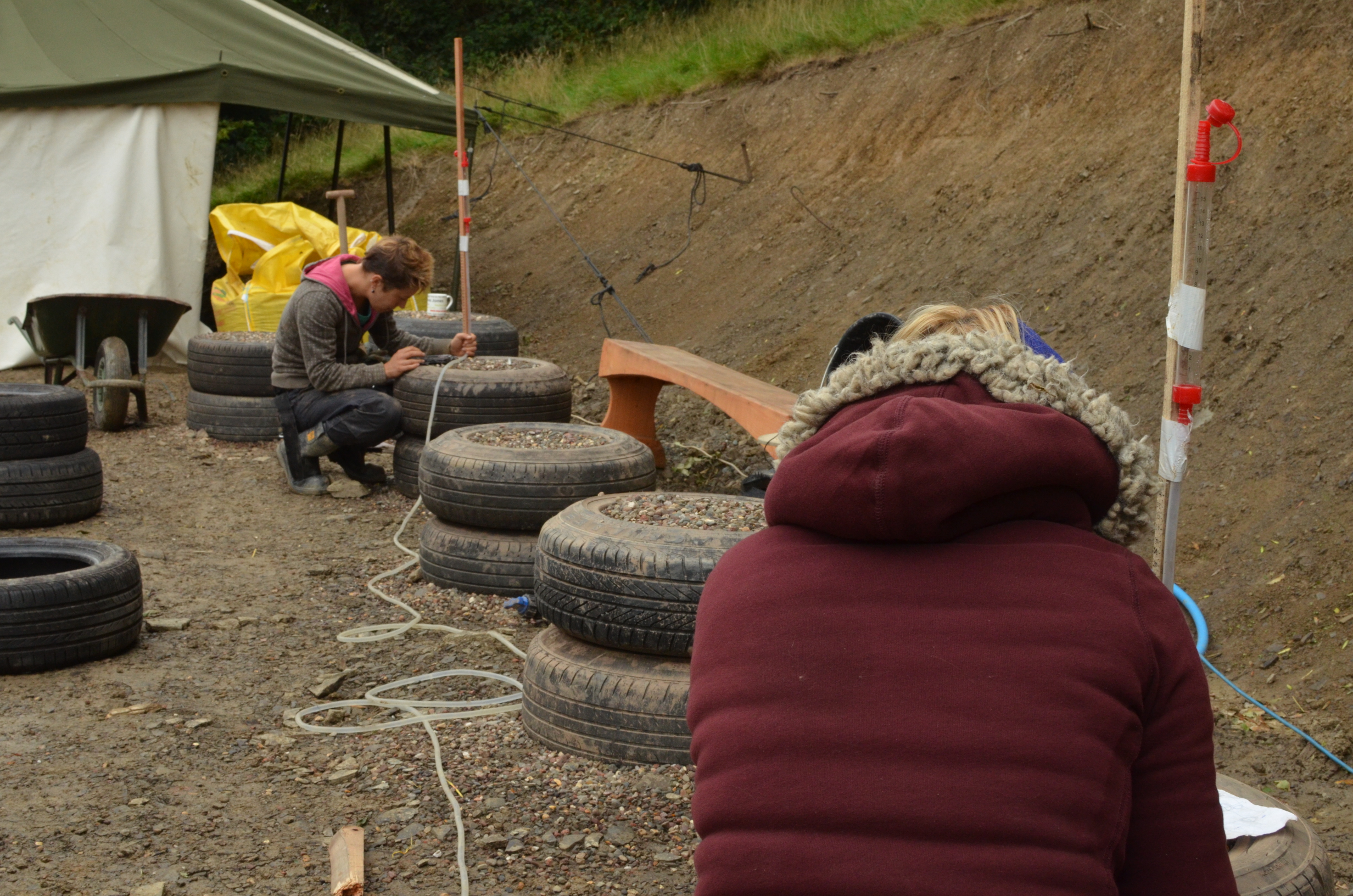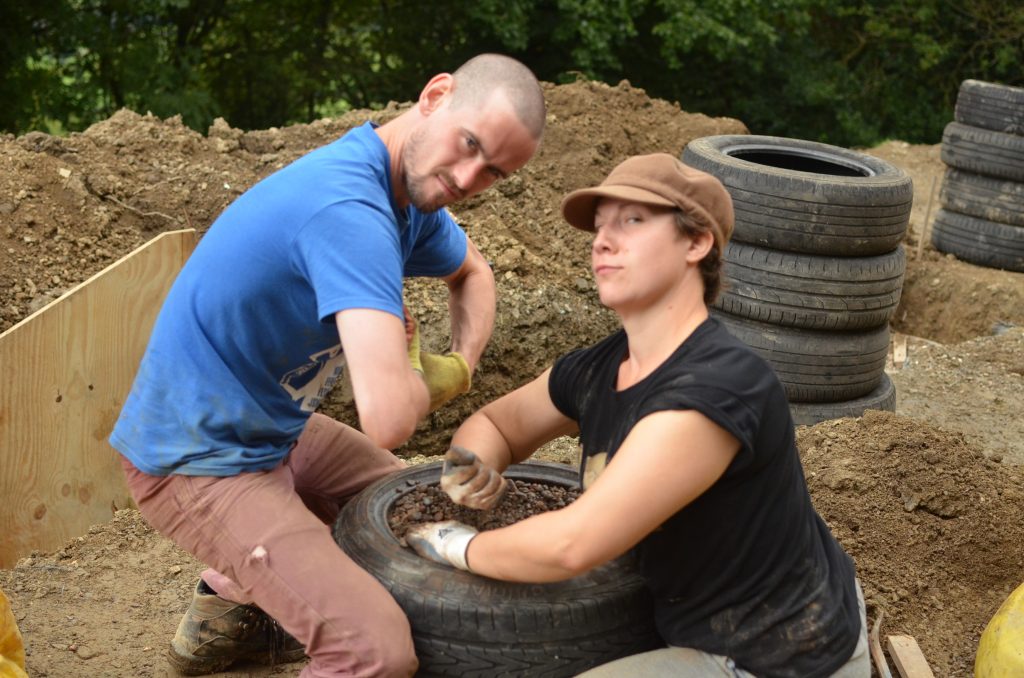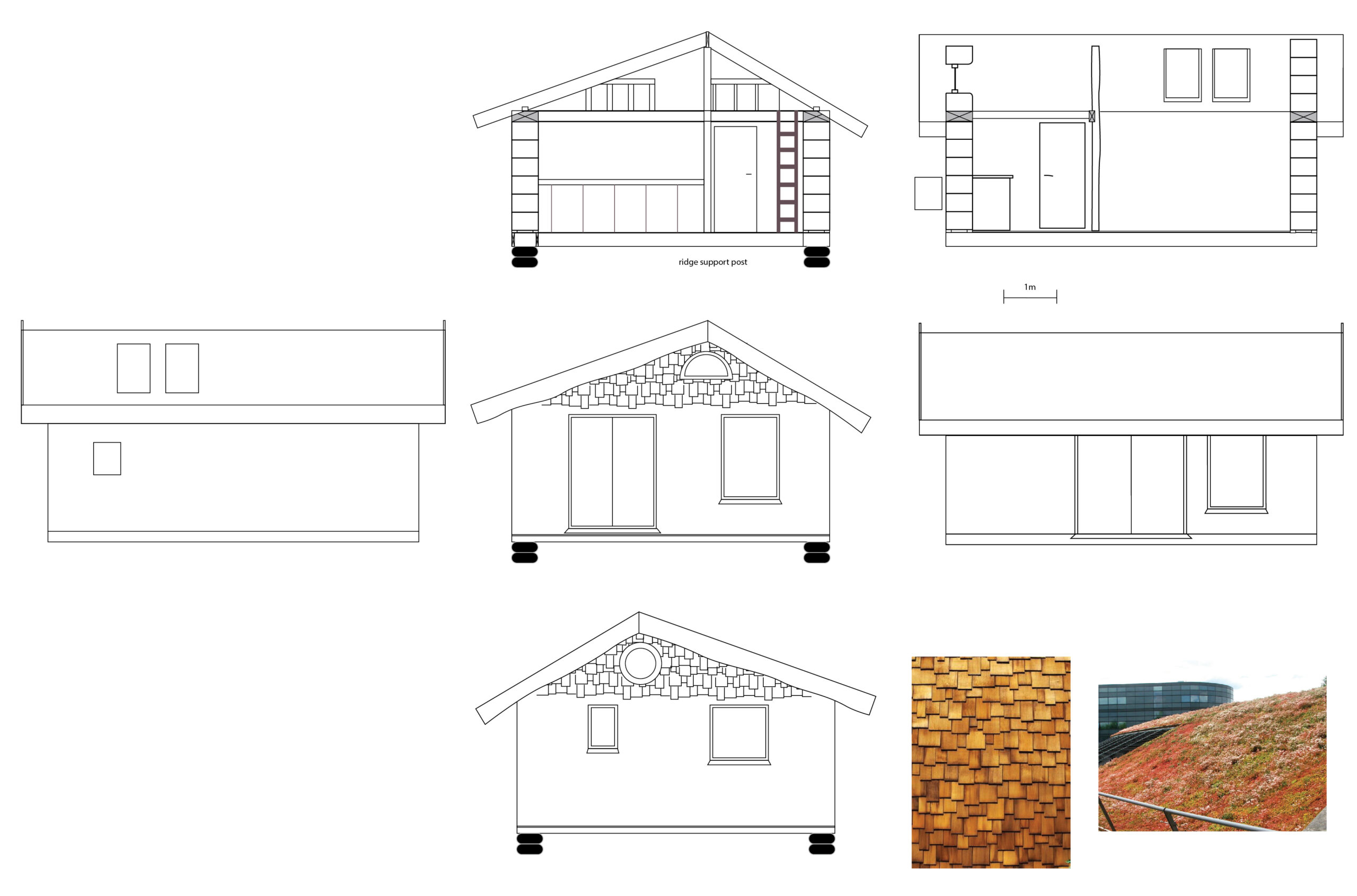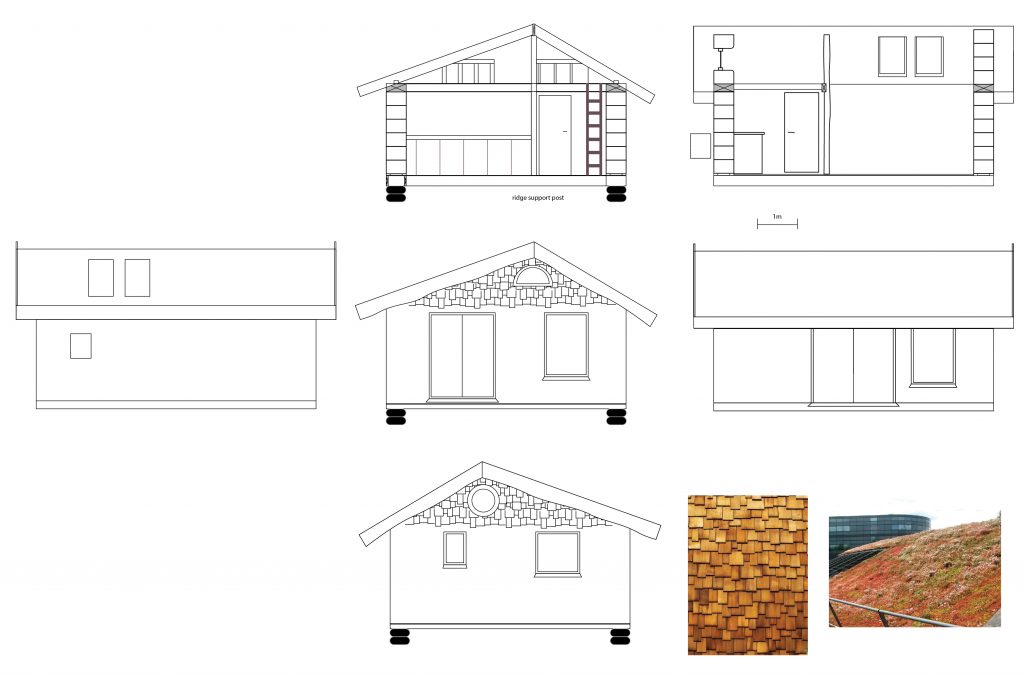In straw bale building we use a few key techniques that are unique to the trade.
Around our windows we have posts, so we need to put a notch in our bales to fit them snugly.
We do this using a Dewalt Alligator saw which is made for cutting building blocks, wood, drywall, insulation and Class 12 clay blocks. It also cuts straw bale very nicely, without throwing up a lot of dust.
I have also used a chainsaw to do this job. While the chainsaw does do an excellent job, it’s certainly more dangerous and a lot louder, plus throws dust into the air.
Here interns, Brendan and Rowena show us how it’s done using a template to ensure the right size notch. (Music by Money Mark)
Tools for straw bale building
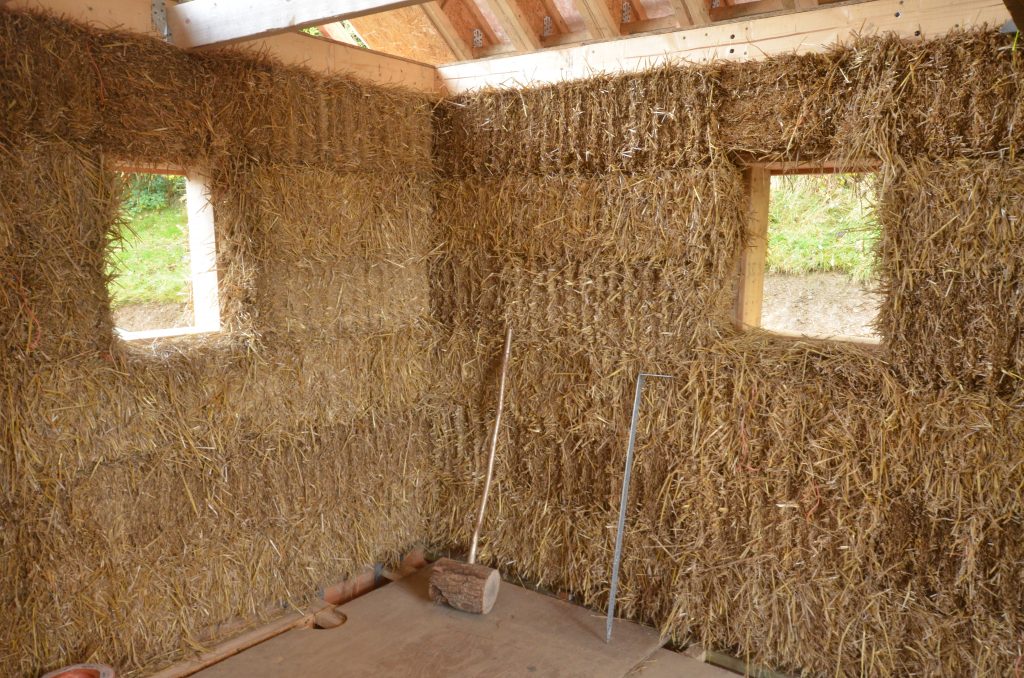
Here we see our beautifully constructed straw bale walls. In front of them, two of the tools of the trade.
First up, we have the persuader. This larger than life hammer is used to knock the bales into alignment.
Secondly, we have the baling needle. This is threaded with twine and passed through the bales like a giant knitting needle in order to re-string the bales to custom sizes.
Dressing the Bales
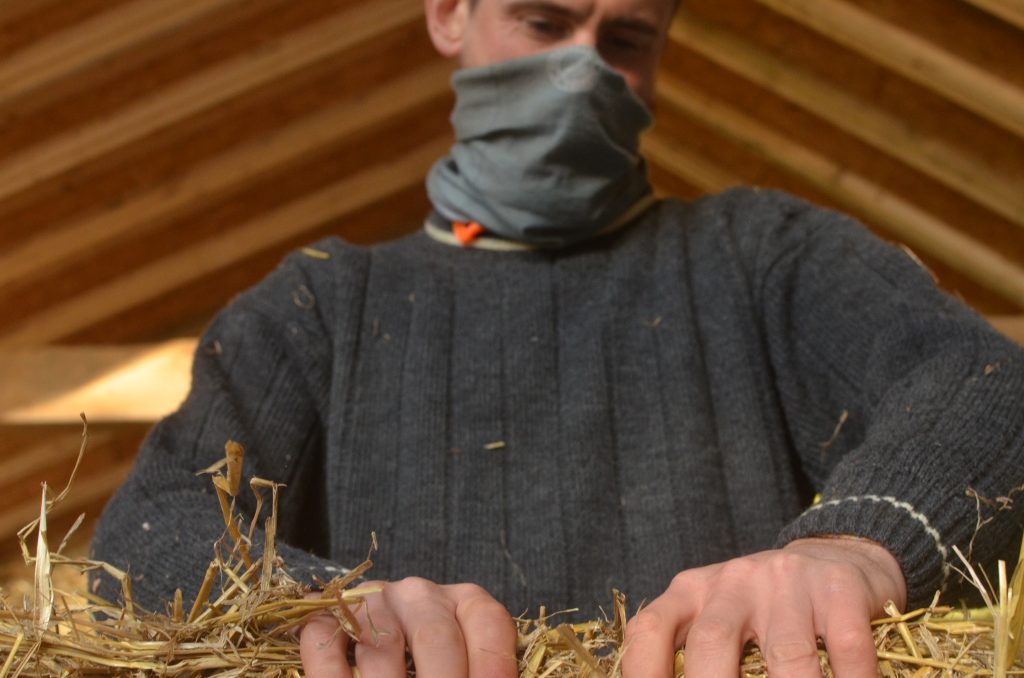
The first thing we do to our bales is to dress them. This means we physically manipulate the straw in the end of the bale to make a flat and square end. This means our bales fit together better with fewer air gaps.

